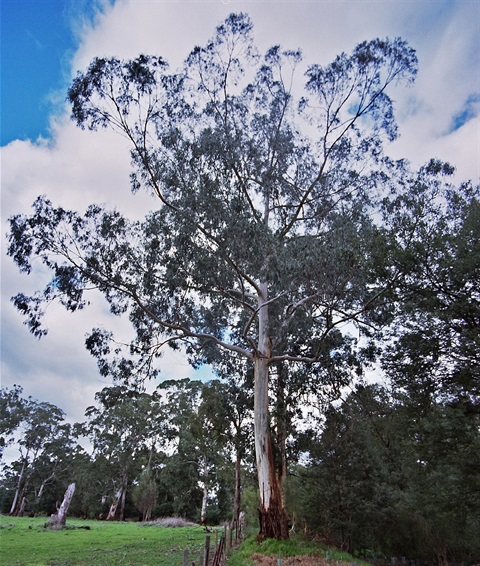
Eucalyptus camphora ssp. humeana
Mountain Swamp Gum
Straggly to erect tree with scaly bark on lower trunk, upper trunk smooth, shedding. Rounded canopy.
Additional information
- FamilyMyrtaceae
- StoreyUpper storey
- Size8-20 m x 5-12 m
- Plant groupingTrees 5 m +
- LeavesThick, egg-shaped to round juvenile leaves, often notched on end, to 7 cm x 5 cm. Adult - stalks to 3 cm, densely veined elliptic to egg-shaped leaves 8-15 cm x 2.5-6 cm.
- Flower colourWhite
- Flowering timeFebruary to April
- FlowersUp to 7 narrow diamond-shaped buds. Narrow, funnel-shaped fruits with erect, projecting valves.
- Bird attractingGeneral - food and habitat
- Butterfly attractingFood plant for caterpillars
- Frog habitatNo
- Growing conditionsGenerally cold swampy areas, tolerating heavy frosts and snow. Usually grows at higher altitudes. Full sun, semi and partial shade.
- Garden useShade and shelter tree for cold, moist to wet areas. Drainage control.
- Commercially availableIndigenous nursery
- Conservation statusSignificant within the Shire. Known from very few local sites. The riparian community that it occurs in is listed as rare. May be more common outside the Shire boundary. Endemic to Victoria.
- Aboriginal Use Eucalypts provided food, medicines, containers, string and tools.
- Related speciesSimilar to Eucalyptus ovata var. ovata but smaller in bud and fruit with broader pendulous leaves. A form found around Yarra Junction, especially on low-lying areas, is smaller with persistent, compact lower bark and smooth branches. Leaves are smaller, juvenile leaves greener and adult leaves more glossy and on shorter stalks than the typical E. camphora.
Photo Gallery
Photographer/s: Peter Kinchington ©
Plant Communities